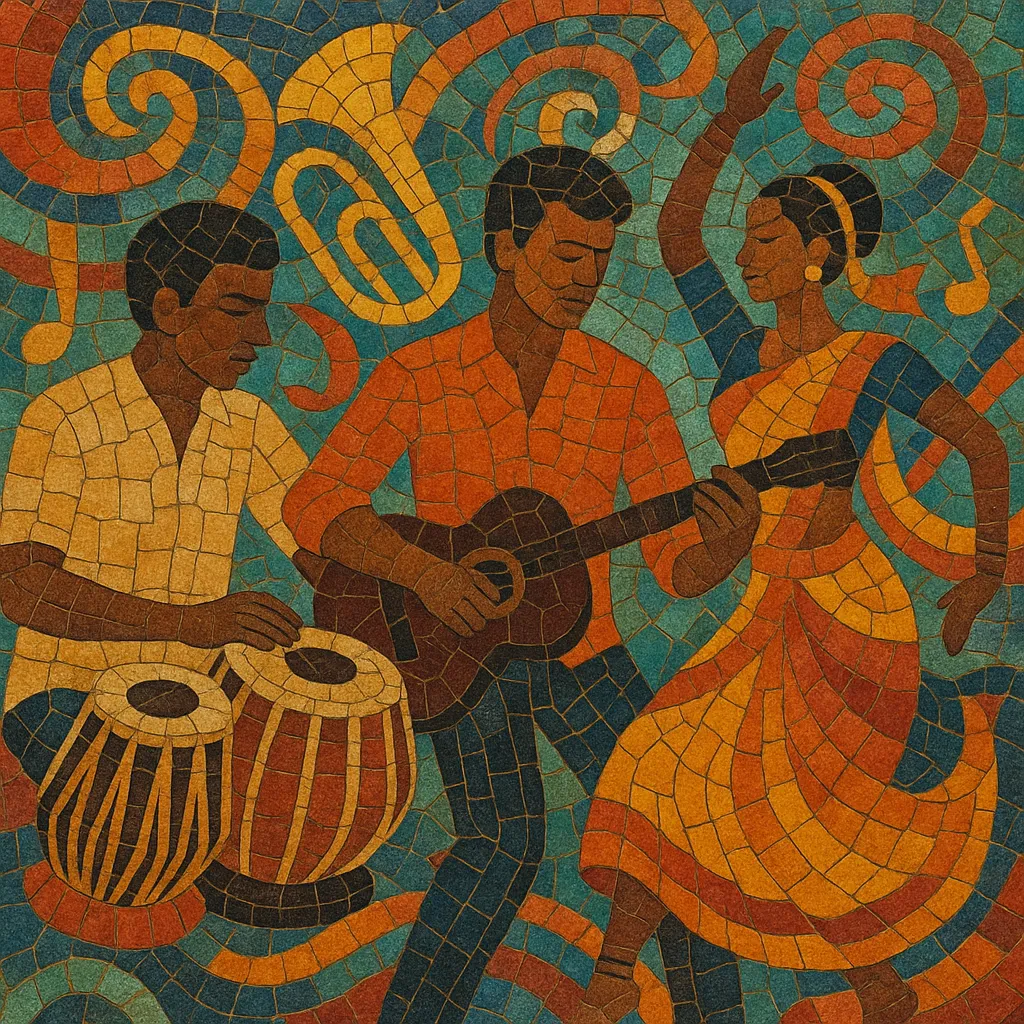Tollywood (in this context) refers to Telugu-language film music from the Indian film industry based primarily in Hyderabad.
It blends Carnatic and Hindustani classical traditions with Indian folk idioms and contemporary global pop, rock, hip hop, and electronic production. Hallmarks include raga-inflected melodies, lush string and brass arrangements, high-energy dance rhythms for "mass" numbers, and emotive romantic ballads. Modern Tollywood songs often feature cutting-edge sound design, hook-heavy choruses, and cinematic dynamics tailored for on-screen choreography and narrative.
The arrival of sound cinema in Telugu with films like Bhakta Prahlada (1931) established a template that drew heavily on Carnatic classical music, devotional forms (bhajan), and regional folk styles. Playback singing and studio orchestras became central to storytelling, with singers like Ghantasala shaping the genre’s golden-age sound.
Growing studio resources enabled larger orchestras, richer harmonies, and more adventurous arrangements. Cross-pollination with Hindustani elements and pan-Indian filmi conventions intensified. The disco and synth-pop waves of the late 1970s–80s brought drum machines, electric bass, and synthesizers into Tollywood, alongside enduring raga-based melodies.
Composers such as M. M. Keeravani, Mani Sharma, and later Devi Sri Prasad popularized hook-forward songwriting, glossy production, and dance-centric numbers that amplified on-screen spectacle. Romantic ballads and "mass" anthems coexisted, often sharing raga DNA with contemporary pop structures (pallavi–anupallavi–charanam forms).
EDM drops, hip hop verses, trap-tinged drums, and international mixing/mastering standards redefined Tollywood’s sonic palette. Producers like S. Thaman fused folk rhythms and classical motifs with modern sound design, while viral choreography and streaming platforms accelerated the music’s reach beyond South Asia. Despite its modern sheen, the genre continues to center Telugu lyricism, raga-informed melody, and cinema-driven dynamics.


